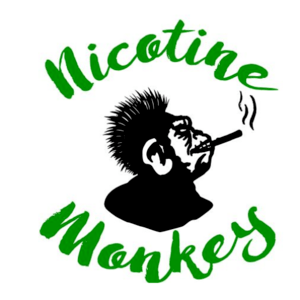The august American Cancer Society, in its efforts to scare people into quitting smoking, sponsors an annual event in November that they call the Great American Smokeout. They show a film titled ‘Smoking Cessation – Three Steps to Quitting’. (The word ‘Cessation’ is redundant.)
The object seems to be to get smokers to quit through fear: the word ‘cancer’ occurs in spoken or written form in this short film (it’s just over three minutes) no less than nine times.
Everything about this film is a demonstration of how to quit smoking the hard way. It starts by mentioning what smokers already know: that if they quit they’ll feel and look better and their risk of cancer will be less.
Here’s a brief excerpt of the script with my comments:
It’s hard to quit smoking.
It isn’t, if you go about it in the right way.
It can take several tries to stay quit.
The concept of trying to quit is meaningless: either you smoke or you don’t.
What is important is that you learn from each attempt so that you can plan better for the next.
Even if we accept the idea of a quit attempt, what is there to learn? All this means is you have merely failed to quit, so now what do you do?
There’s no one right way to quit.
But there is. You just quit!
There are three steps that lead to quitting for good. First, make the decision to quit and set a quit date.
I explain in an earlier post why setting a quit date is counterproductive. In any case, there’s only one step that leads to quitting for good. You make the decision to quit and – that’s it! You never smoke again. If you make a decision to quit but put it off for, say, the next three weeks, you haven’t made a decision to quit – you’ve decided to carry on smoking. What’s going to be different in three weeks’ time?
Second, make a plan to manage your day without smoking. Smoking is likely a big part of your daily life and activities, so your next step should include a plan for how to manage your day without smoking.
Why do you need such a plan? If you stop smoking, you just carry on with all your normal activities without smoking.
Think of the different things you can do instead of smoking that can help you manage cravings.
Here we go again. You’ll have ‘cravings’ that will need to be ‘managed’. And as already mentioned, you don’t need to do anything special instead of smoking, You just carry on with your normal activities without smoking.
Some of these might include exercising, getting out the house for a walk or visiting a local park, chewing gum or hard candy, relaxing with deep breathing or meditation.
It would be rather uncomfortable chewing on hard candy. And do you really have to go the trouble of learning meditation in order to stop smoking?
Finally, talk to your doctor or pharmacist about your decision to quit. They can provide counselling and discuss other options like medications to help you quit. Studies show that you have a much greater chance of quitting when you get support.
Now we come to the point. Why would you talk to your doctor or pharmacist unless you were seeking a prescription drug or an over-the-counter medicine, respectively? You don’t need medications to help you quit – you just need to quit!
You may also want to talk to your doctor about a screening test that can detect lung cancer early – a low-dose CT scan. It is a fast and painless test that can find early stage lung cancer when it is more easily treated.
Apart from being scary, this is controversial. There’s no proof that such screening saves lives even in heavy smokers. One of the problems is that if the screening shows the all-clear, the next day a cancer might start to develop.
It’s curious that in all this there’s not a word about why people smoke: nicotine addiction.
Text © Gabriel Symonds
The painting is ‘Morning Coffee’ is by Atanas Matsoureff


Leave A Comment